
The past seven days have been hectic, both for me and William Fagan, the author of the original article on the mystery surrounding the old Leica film cassette from the early 1950s. It all started with a report on the BBC website last Monday. This, in turn, led to a tremendous amount of interest from all over the world. The particular focus was always on Bavaria, Switzerland and northern Italy, tracing the journey made by our two unknown travellers in their mid-thirties BMW convertible.
The mystery couple
On Saturday, a piece in the New York Times, following an interview with William, set another fire under the pot. This time we started getting many emails from the USA, several from expatriate Swiss of German nationals who were familiar with the region. But it was the article in the Munich-based Süddeutsche Zeitung that seemed to offer our best hope of identifying the man and woman in the photographs. There was no link back to Macfilos, which was a pity, so we can only rely on the journalist, Martin Zips, to keep us informed of any developments. As our German contributing author Jörg-Peter Rau, himself a journalist in Konstanz, says, the chances of identifying the couple are now promising.
As the new articles appear, we are getting more and more visitors to the original Macfilos article. At the time of writing, the article has had 23,000 views, and there are now well over 200 comments, many of them offering potential solutions to the mystery.
Unfortunately, we do seem to be going round in circles, and the purpose of this article is to bring people up to date with what we do know about the 70-year-old adventure. I will post a link to this article back to the original, and I hope that newcomers will read all the comments and stick to new information. It will also serve as a link to respond to the hundreds of direct emails we are receiving.
The BMW Cabriolet
Much attention has been focused on the BMW 315 cabriolet, which features in the photographs. Many comments have suggested that checking the registration details would be all we need to do. I’m sorry to disappoint. This was obviously our first thought back in August. The number plate was issued in Munich in 1948, but the records are no longer available, certainly not in digital form and possibly not even in physical form. This was the time of the American occupation of southern Germany and, unless we can find someone who knows the whereabouts of the written records, if they still exist, we are no nearer to putting a name to the owner.
The car itself, apart from the number plate, has also created great interest. We know that it is a cabriolet from around 1935-7. Only a few were built, and we are in touch with several experts who are chasing classic clubs hoping to find the car. Unfortunately, it won’t be easy to pin down the specific car unless the current owner holds documents which cover ownership and service history. In some ways, finding the car is almost as exciting as putting a name to the people.
The date
The second aspect of interest and speculation is the journey, the period and the identity of the various locations. This, again, has been more or less all agreed, thanks to the investigations of our co-conspirators on the spot. We are now fairly confident that the journey was made in the spring of 1951.
This is made possible by a forensic examination of the Bahnhofplatz photograph undertaken by a Leica Forum member. Using old images of the same scene, comparing advertisements and street furniture, including the police sentry box, he was able to come to a conclusion. Bahnhofplatz in the old photographs was an ever-changing tableau and has helped pin down the period when the photograph on William’s roll was taken. It seems that all the ducks were in a row in late December 1950 (as demonstrated above in the annotated photograph), but we know from the weather, the dress and the mountain pass conditions that the journey was probably a few months later.
Another factor influencing the dating is that the number plate was issued in 1948 and could well have been due for renewal sometime in 1951.
Having homed in on early 1951, our first thought was that this was an Easter excursion. However, the winter of 1950/51 had been a hard one judging by the scenery later in the trip. Also, Easter was early in 1951, so the trip was probably undertaken later. One correspondent, Peggy, has suggested that the most likely date would by Whitsun (Pfingsten) of 1951, thus providing a precise date of May 11-14. This seems to be the best bet, but we are prepared to be wrong.
The route of the holiday has been identified, and all the locations are now known. Contributors Toby and Chris have done much research, and we now think we even know where our couple stayed. One photograph, for instance, is almost certainly taken from the fourth floor of Hotel Tamina in Bad Ragaz. We have a great deal of further information but, for the time being, we are soft-pedalling on this aspect.
There is a lot of work going on behind the scenes, as you can see from the above pictures, and we still have a long way to go.
Speculation and intrigue
There has been much speculation, and we have received many possible identifications of well-known people, including one suggestion that the man was ex-King Leopold of the Belgians. Much as we would all like this to be true, the truth is that these people were probably very ordinary and there will be no spectacular back story. As it is, several correspondents have woven plausible novellas based on the scant facts, including one suggesting that they were fleeing justice in Germany following the war. All this is unlikely.
Our objective now must be to get as much local publicity as possible in the hope that someone recognises a grandmother or grandfather, uncle or cousin. There must be someone in Bavaria or Canton Zürich who recognises these people.
William and I have been overwhelmed in the past week by the interest and the support we have received from all over the world. It has been an effort to keep up with the constant flow of information, and I apologise if we have not been able to investigate every suggestion or pore over every linked website.
As I promised last week, there will be a full article covering the results of all the research. It stands on its own, even at the moment, but identifying the two people would be the jewel.
Please read through the comments on the original article before writing with what you will find could be duplicate suggestions—such as suggesting, as hundreds have done, that we check the vehicle records.
If you have new information, however, we would be delighted to hear from you. Either comment below or write to me, mike@macfilos.com

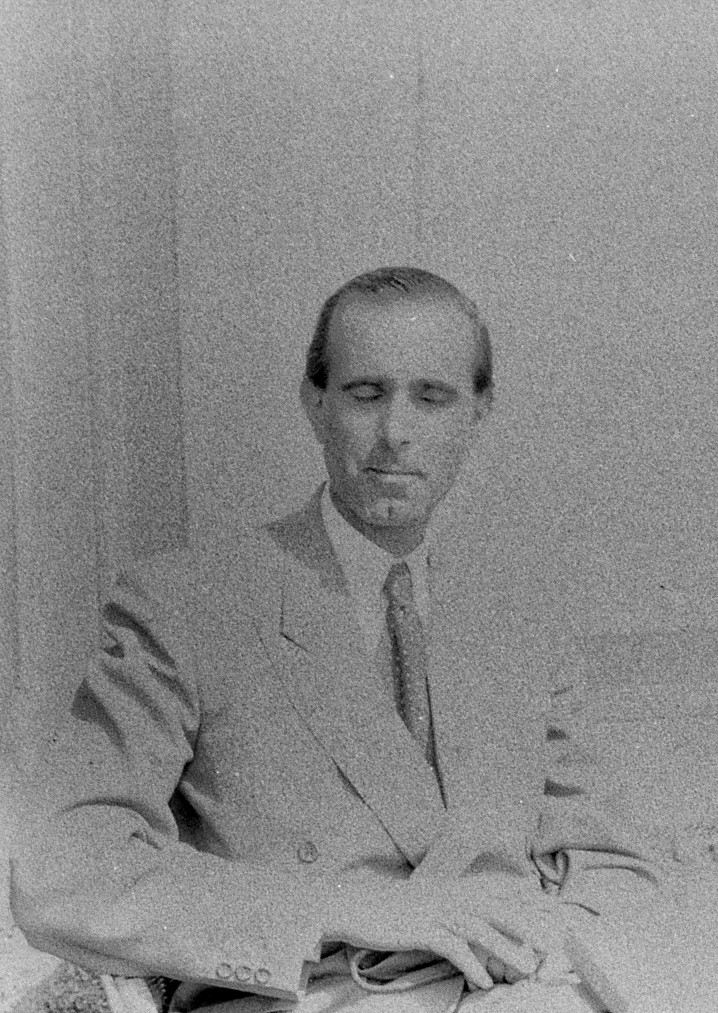
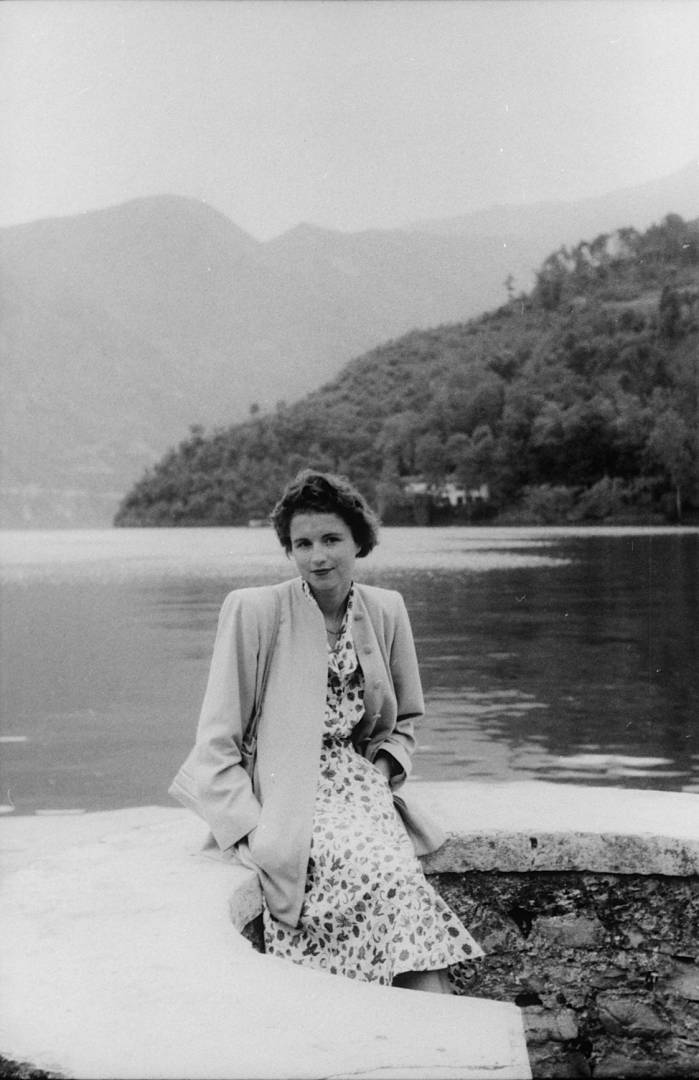
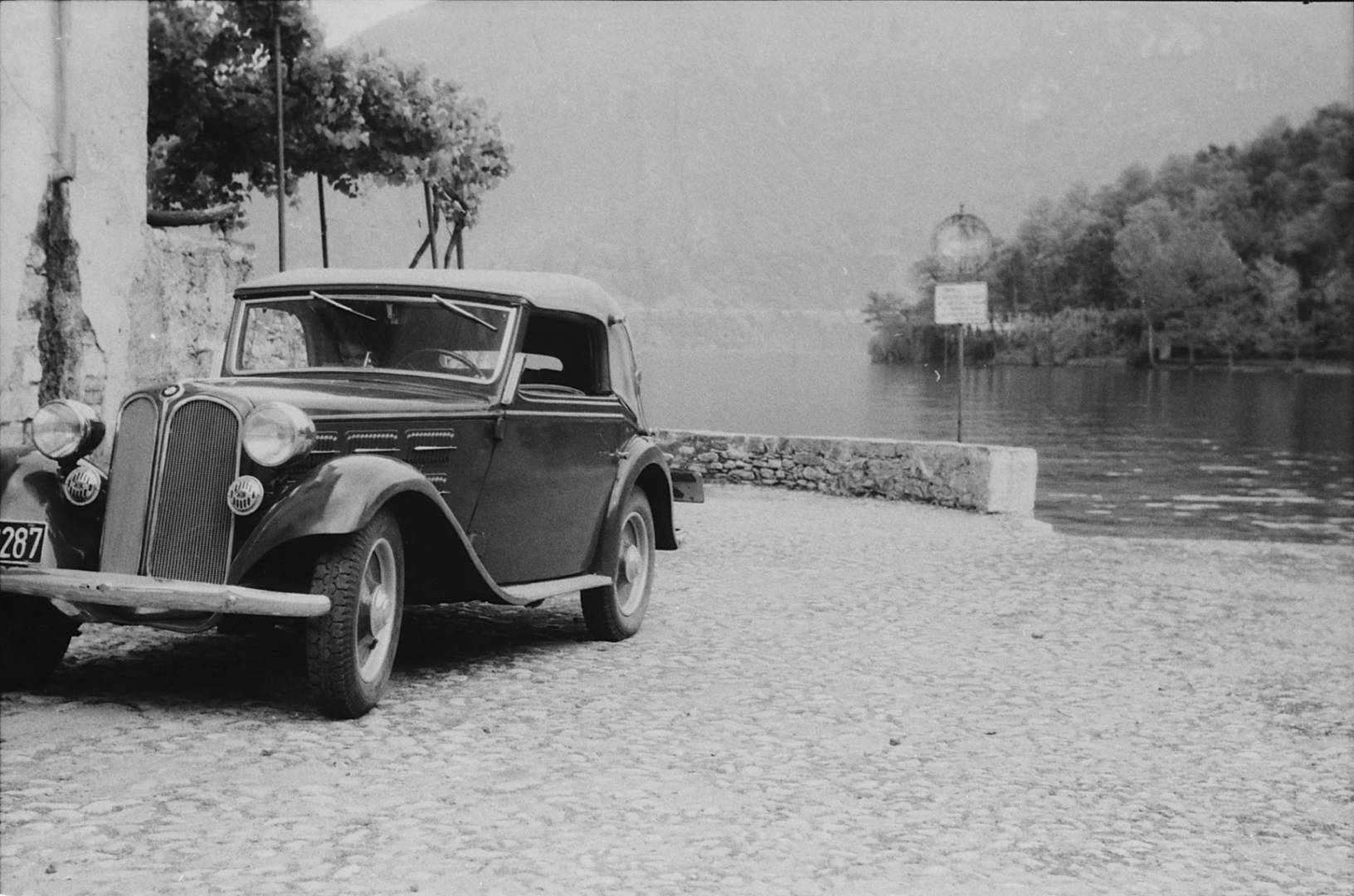

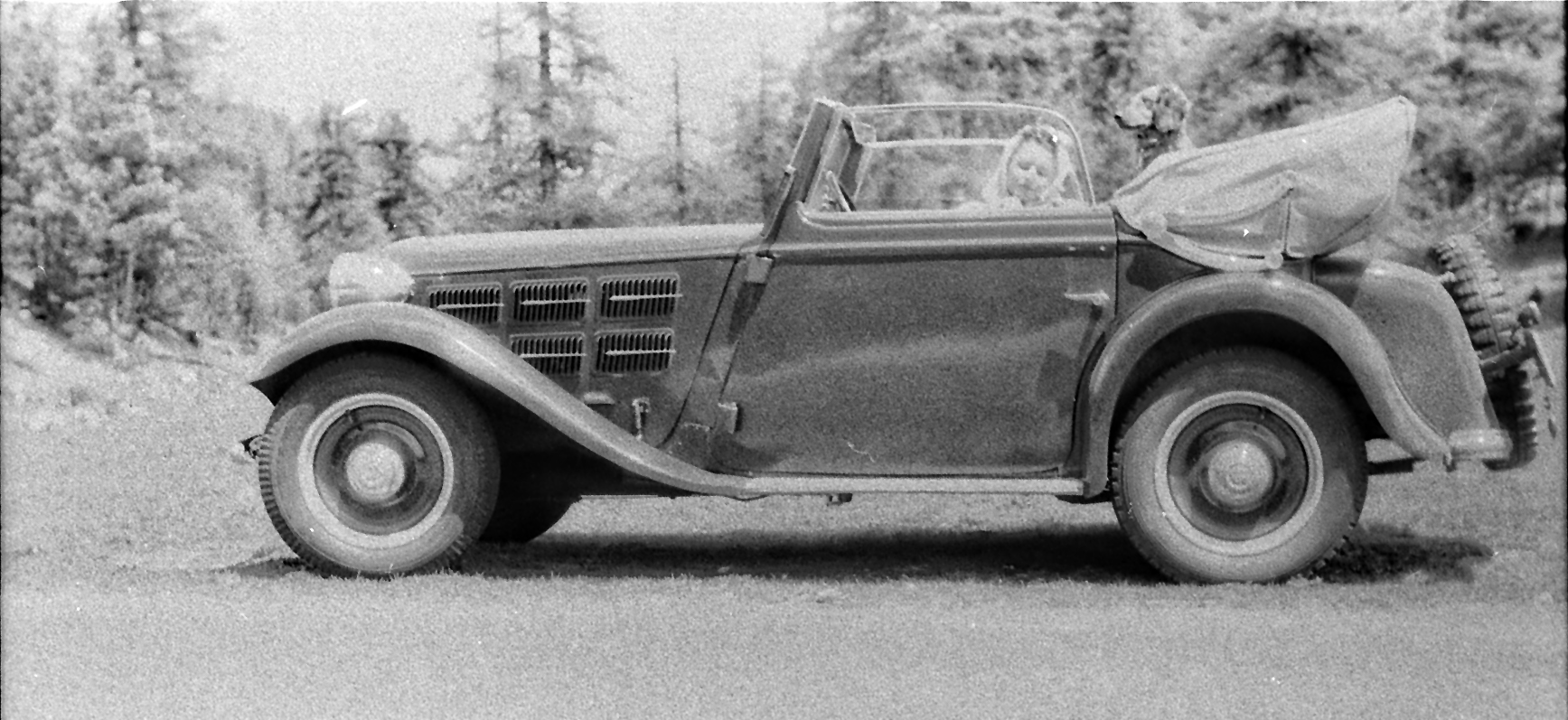
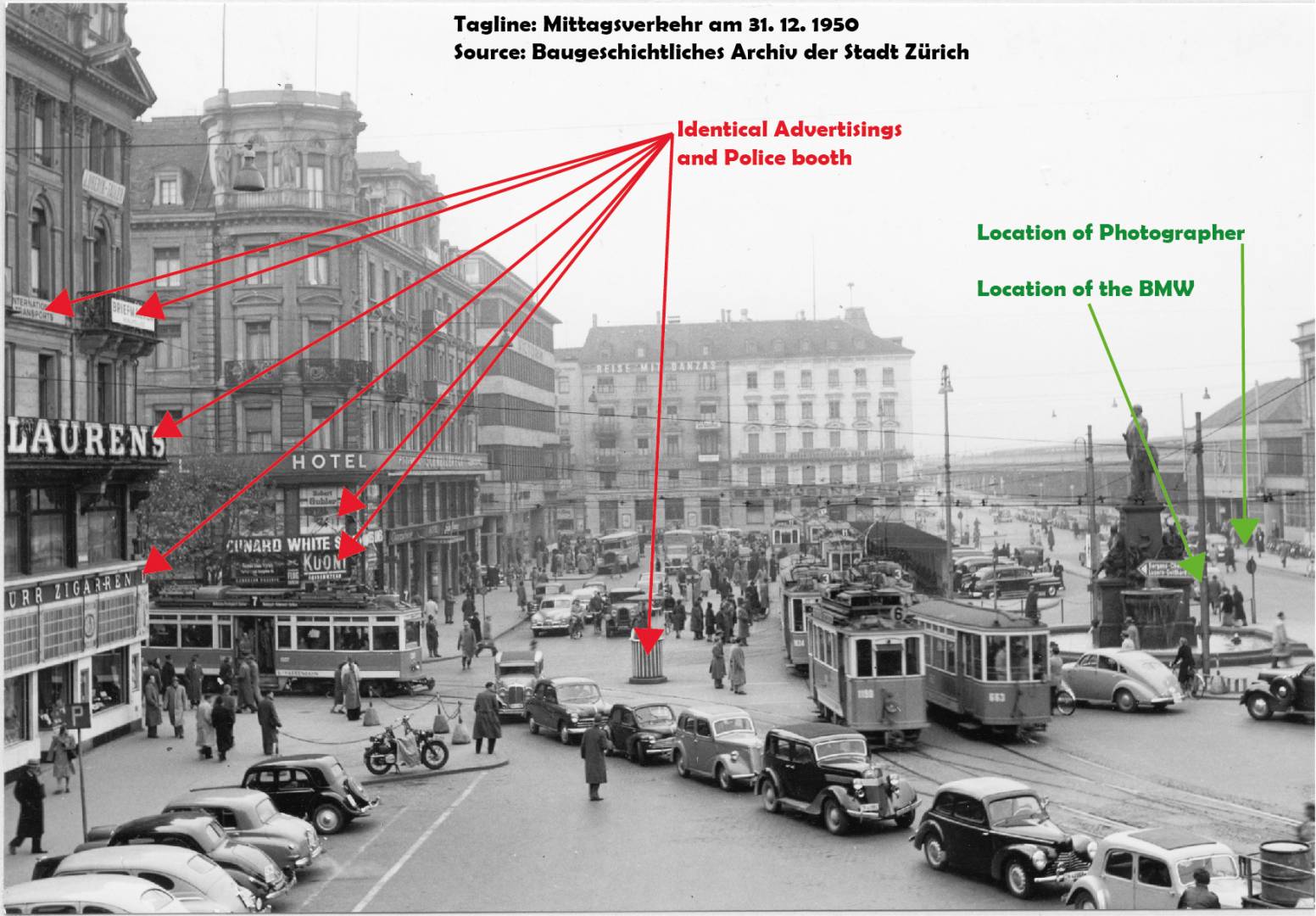
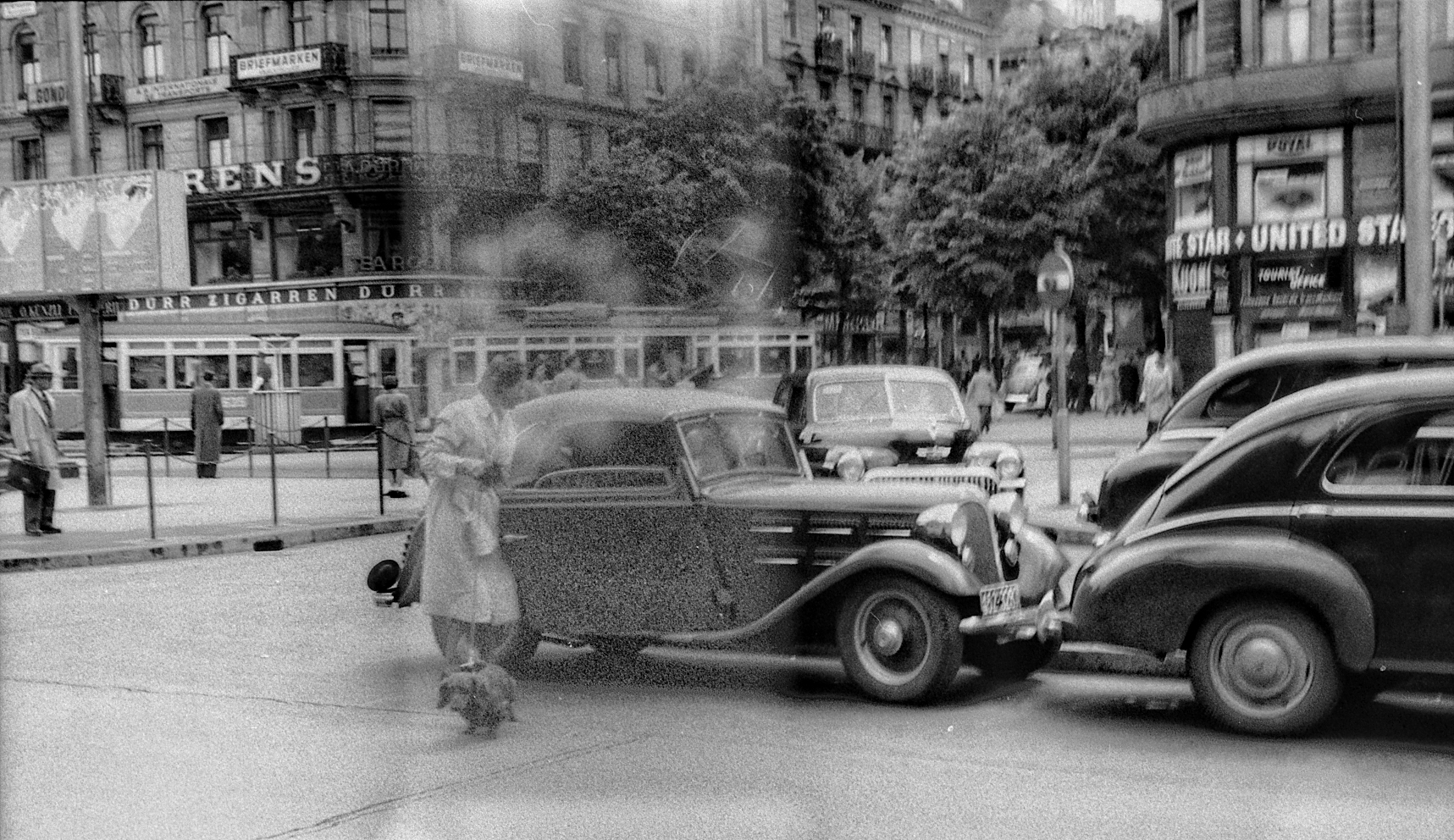
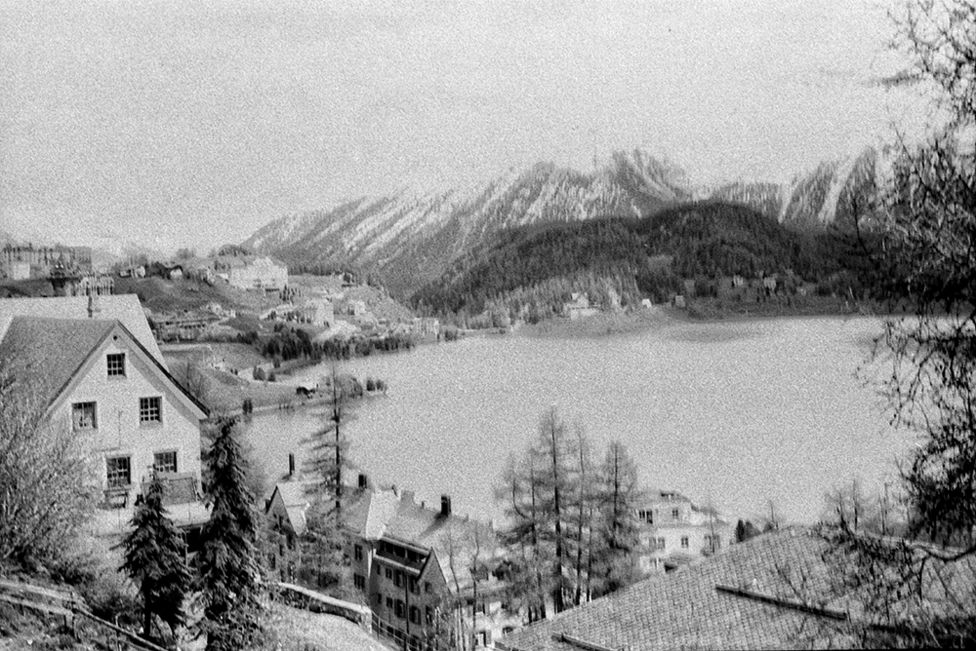

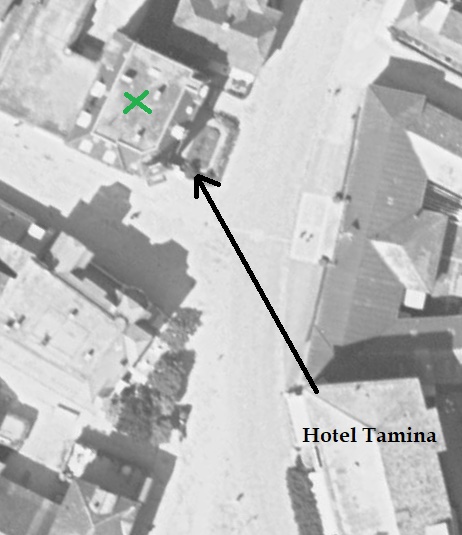
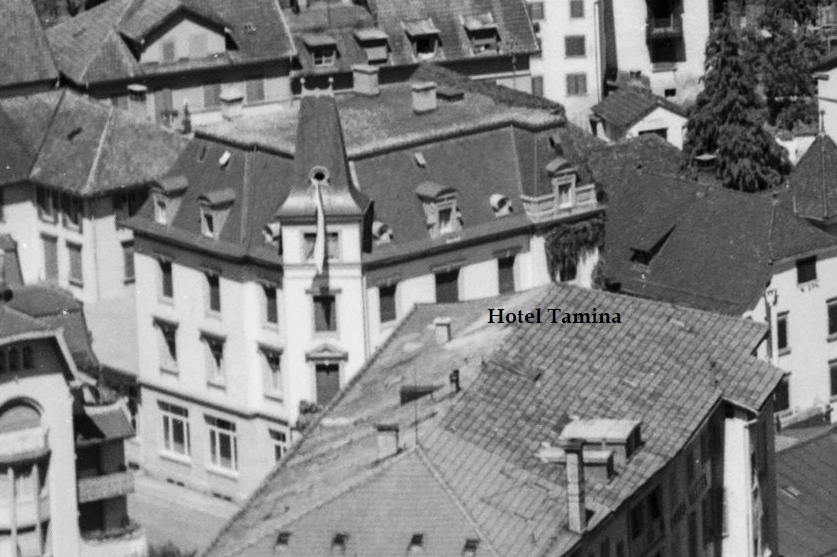
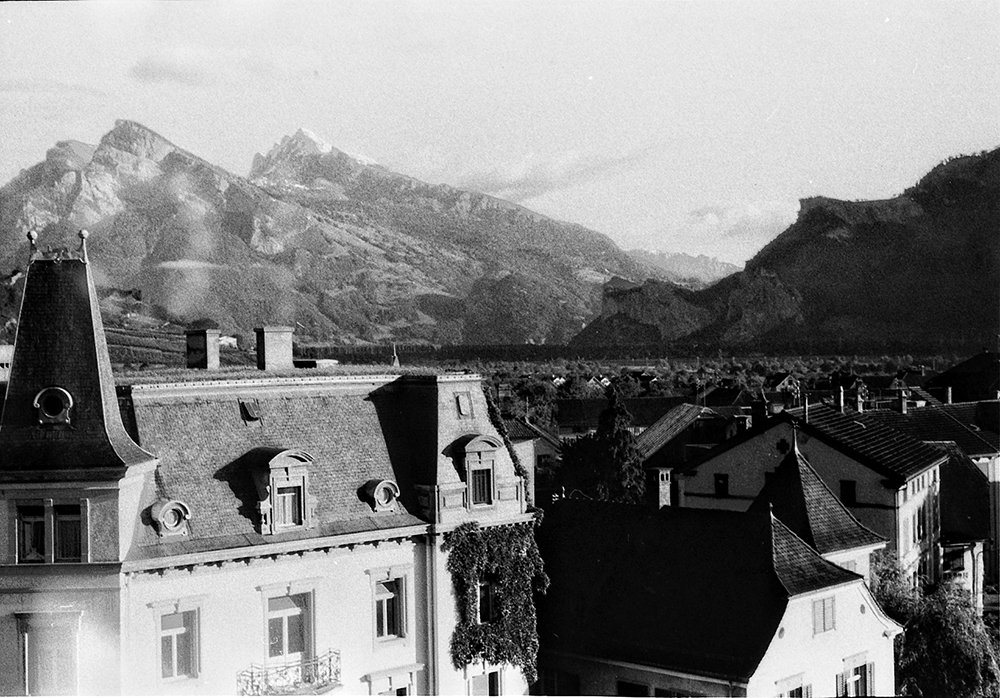




I think the older lady “grandma”, is indeed related to the younger woman. It is not too much of a stretch to imagine “grandma” coming along for a wonderful “day-trip” from Munich to Zurich, and then, after having a nice lunch and then some coffee and cake, grandma takes the train back home to Munich, and the couple continue on to Bellagio.
Any new updates?
I find it a fascinating tale and wish all those doing the detective work the best luck in solving the mystery and getting the photos to relatives of the couple.
Excellent story, fascinating to follow and hopefully you find the real people behind this lovely holiday. I’m sorry that a few have taken it too seriously or gone to far in their speculation, I hope it won’t deter you from keeping us up to date!!
Thanks Diana. This ‘story’ which is not a story, has created a lot of speculation. I have to avoid that and deal with hard facts which would include visual identification and also evidence relating to time and place. However, just to your point about a suggested ‘illicit affair’, I would draw your attention to presence of the older woman at the beginning of the trip. She certainly did not look like a person who would approve of any of ‘that sort of thing’.
The objective still remains to find the families of the people and it may well be the case that they have already seen these photos and don’t want any part of this 70 years later for whatever reason we can only guess. I thought long and hard about the initial publication and then about wider publication when I was contacted by my friend Phil Coomes, the BBC Picture Editor. However, I concluded that the photos would not do any good sitting in a box with my other vintage photographic items, so I took the decision to publish, particularly in the light of the strong probability that neither of the two people in these photos are still alive today.
If, however, we had a confirmed request from any of the families involved to withdraw the circulation of the story and the images, I would do so immediately.
So called ‘found film’ cases are common and happen every day. I am sure that some old camera/photograph collectors are wondering what all of the fuss is about. I am still not sure what has caught the ‘public imagination’ here and I certainly did not envisage this when writing the original article. It may well be a combination of time, place, circumstances, the nice car, the nice clothes and the sense of mystery from the uncompleted roll of of film which lay undeveloped for 70 years. You can take your pick from any of that. Leica camera has done well out of this as the number of viewings of the brand name has been in the millions. Even though I collect and use old Leica cameras myself, I did not have that in mind either.
William
“She certainly did not look like a person who would approve of any of ‘that sort of thing’”
I applaud you dear sir, you made me giggle with your humorless logic. I mean, the old lady did.
Where I come from that figure of speech has been common for a very long time and is considered to be humorous. You might like to watch a few episodes of ‘Father Ted’ to become more familiar with it. One of the episodes features Father Ted holding a poster saying ‘Down with this Sort of Thing’. Not only did it make the Irish laugh at themselves, but it also ‘crossed over’ and was the subject of an article in the Economist in 2017 about how the term got culturally appropriated and went into general use in Britain and elsewhere.
A word of advice if you are ever coming to Ireland. Leave your notions of logic and humour behind you and enter into the spirit of ‘that sort of thing’.
William
*giggle*
That’s even better than Banksy with his IEAK anarchist hopelessly trying to assemble protest slogans.
But I think I will explore more southern countries for what kind of sorts of things they’s been doing there.
To Aubert Diana: I fully agree that this couple, or their relatives, have a right to privacy. I also believe that they have a right to get their photos back. I also think that there is fairly strong evidence that this couple is not having an affair. You must go to William Fagan’s December 22, 2020 post to see all the frames of the photos he discovered. Frame 2 shows the mystery woman talking with someone who is not the photographer. Frame 3 shows the mystery woman beside an older woman. Of course no one would invite grandma along for an affair.
But let’s assume that something illicit WAS happening. The couple would certainly have the right to tell the world that the details of the trip were no one’s business, and if so, the world should leave it at that.
But the photographer still has the right to get the photos returned.
Richard M Evans https://www.facebook.com/richardmevansauthor
As I read this story and became intrigued by it, I kept asking myself, “Where have I seen this woman’s face before because it looks so familiar”, and now it has dawned on me. The woman’s face is actress Lea Thompson’s from BACK TO THE FUTURE. Except that it can’t be she because Lea Thompson was born in 1966. Maybe it could be her mother or an aunt or some other relative? I read that Lea’s mother is of Irish descent. Or maybe she really did go back to the future.
From the comment:
The woman’s white dress appears to have, among other things, a saguaro cactus shape as part of the print. No cactus is native to Europe. The Saguaro cactus only grows in the southwest U.S. or in Mexico. So I think the woman likely bought the dress in the U.S. (Also see Lisa’s comment about RayBan sunglasses. If the woman indeed made a trip from the U.S. to Switzerland/Germany/Italy, ….”
I would believe that the woman wearing the white dress with a saguaro cactus shape would be wearing a textile which had been printed and most probably bought and sewn in the US.
But one must ask oneself something; as tantalizing as this story may be, could the fun of solving it be worth the waves of disturbance it might cause the descendants of these people if this were for example, an illicit romance?
I had the whole story unfolding in my mind quite on a different track from anyone else’s speculation, but it got derailed by the saguaro print of the woman’s dress. I had the woman as South African whose mother was an Irish nurse during the war and tended to a German soldier in a London hospital. They married shortly after the war and went to live in South Africa.
I think that the Dachshund may prove to be key in identifying this couple.
I was thinking more along the lines of 1945-46 time frame. The sunglasses in Frame # 19 look to be American. https://www.pinterest.com/pin/15129348717682015/
But we have proved the the date cannot be earlier than 1950. It doesn’t bring us any nearer to identifying the couple, which is the main objective.
This trip did not take place in 1945-46. There are features in the first photo from Bahnhofplatz in Zurich which were not there before 1950. I have already dealt with the issue of the sunglasses. Europeans then and now could wear American sunglasses if they wanted to. They were also not obsessed with having ‘ this year’s model’ and wore whatever they liked.
William
Just a thought or two or three. I have discussed the clothes with a friend of mine who knows clothes and she has dated the man and women’s clothes to 1930 to 1945. I don’t believe anyone has brought it up but the trip in the late 40’s required gasoline to accomplish and that was a scarce commodity in post war Germany but not if you were associated with the American Military. The first dependents of American soldiers arrived in Europe on April 16, 1946 and there was a large presence at Garmisch as an R&R center as well as Munich. I have written Walter Elkins, the webmaster of the US Army Germany website for information on how cars bought by American servicemen were registered in the late forties it is quite possible they didn’t have the distinctive USAEUR license plates at that time. Frame # 19 shows the woman in a pair of sunglasses which I doubt very seriously were European in origin. Americans used sunglasses much more than European women. Finally a great clue is the dog and his prominent license tag. Dogs weren’t welcome in most hotels in Europe, even today. Most European couples would have left their dog at home rather that trying to travel with it. Americans wouldn’t leave their dog alone in family housing. I also will ask him about the licensing requirements to bring a pet into Germany. My thought is that this couple is affiliated with the US military either a soldier or civilian or a State Department employee who are on a vacation while being stationed in Garmisch or Munich. I will continue to search along these lines. Best of luck Bob
It would not be unusual for German citizens in 1950 to wear pre-war clothes. But it would be unusual for Americans at that time to wear pre-war clothes. But good luck with your investigations.
Thanks Bob
While I believe that the couple are European, this trip, which could not have been earlier than 1950, could have been taken by someone associated with the US Administration in Southern Germany. I don’t know a lot about clothing, but I would have thought that the clothing shown in the photos could have been seen in any European City in 1950 and to my eyes the couple are very stylishly dressed. I know even less about sunglasses, but I would have thought that it should have been possible to purchase US made items in 1950. The street scene in Zurich shows a lot of American cars, so if cars could be imported why not sunglasses eg by Koch of Zurich who sold Leicas from the 1920s onwards and who sell Ray Bans today. The average Zurich resident would have had a higher income than was the norm in the US at that time.
Based on what I have seen and heard there was a lot of ‘trade’ between US military personnel and the local German businesses and population. My friend Bill Rosauer (LHSA Viewfinder magazine editor) whose father served with the US military in Germany from 1945 onwards has pages from the Leica delivery records from 1945 onwards which show direct distribution (not via a dealer) from the Wetzlar Leica factory to named US military personnel in Germany. There was also, according to Bill, a system of unofficial barter between US military and the local population, which could be a way that a couple such as this could have obtained US items. Finally, as regards driving a 15 year old car, US style consumerism had not reached Europe in 1950 and a wealthy couple would not have thought anything about driving such a car, which is today, 70 years later, a very much sought after collector’s item.
Finally as regards the dog not being allowed into hotels, there are at least 3 photographs on the roll which were taken from hotels (we have unpublished evidence identifying possible rooms) and we can, I think, assume that the couple stayed in those hotels while continuing to travel with a dog.
These are some thoughts to help you. I don’t buy into the notion that a cactus on a dress and the wearing of RayBans necessarily makes a person an American. The use of the term ‘pre-war clothes’ makes me think of ‘hand me downs’ and I would regard this couple as being extremely stylish in the way that they were dressed. Thanks Bob for offering to search for records and I would, of course, be delighted if you could prove me wrong and trace these people’s identity from US records.
William
As William says, the use of a 15-year-old car was normal in Europe in 1950
New cars were virtually unobtainable. Everything manufactured was exported. It was the same in England. Pre-war cars were the norm, even among relatively wealthy people.
The same applies to cameras. I have documents somewhere (I published an article some years ago) which show that’s Leica production had specific quotas for US, British and French service personnel. Only a tiny percentage was sold on the domestic market. So, again, Pre-war cameras would have been the norm.
May I add something? After the war, USA was something like 50% of the economic output on this planet. It was only natural that any special product category seen on the market was made in the U.S.A., like cars or sunglasses, as there was no one else to make those in a post-war world.
I dropped the images into an online image coloriser as sometimes it can be reasonably accurate. I believe the coloriser’s results may be useful: the lady’s suit jacket colorises as a pale lavender and the body of the dress pale turquoise rather than white. The print patterns appears to be standard fruit and leaves rather than cacti, as has been suggested. The car appears to be brown with possibly black mudguards.
https://api.deepai.org/job-view-file/511d7197-179c-406a-a97a-07ed69668e02/outputs/output.jpg
https://api.deepai.org/job-view-file/13216a87-1b6b-4446-bce6-e57e335eb8aa/outputs/output.jpg
https://api.deepai.org/job-view-file/7fce1cdf-8e3f-4419-89e3-cdb0cca3edde/outputs/output.jpg
https://api.deepai.org/job-view-file/3cfa8791-ce7b-4536-81da-58f9da872ab8/outputs/output.jpg
The links above do not appear to be working. I already have a colorised version of the woman on the seat with the dog. I sent that to Mike yesterday.
William
Let’s try again: https://imgur.com/a/fYZHSzM
Other than the St Moritz identification all the lake images are of Como as follows:
The very first image on your 11th Sept page is of the Bellagio pennisula taken from somewhere on the Via Statale 1km north of Tremezzo, possibly near the Hotel Brittania Excelsior. If you go to the first group of photos, the woman is sitting on a section of wall that’s very similar to existing directly across the road to the hotel (Bellagio in background). Could they have possibly stayed there as their base for exploring the locality?
Next the paddle steamer through the trees. If you compare with the left hand image top row of the second group of photos you will see the same structures at the foot of the mountain. The mountain is the Monte Grona situated behind the town of Menaggio. Nowadays Menaggio is from where one takes the ferry to Bellagio. (The main pic below in that group has already been established as Lenno).
Finally, the woman sitting on a bench with the dog. I note one commentator said this was at Lake lugano. While the spot she identified has a similar tree background, there is an almost identical array of trees in the centre of Bellagio on the Via Lungo Lario Manzoni. Given that all the sights are around Como, I think any Lugano connection could be ruled out.
[The above conclusions are based on my own travel photos around the said locations mentioned cross referenced with Googlemaps and Google Earth].
I suggest you read William’s latest update which was published today, December 22. It contain more details of the locations.
The woman’s white dress appears to have, among other things, a saguaro cactus shape as part of the print. No cactus is native to Europe. The Saguaro cactus only grows in the southwest U.S. or in Mexico. So I think the woman likely bought the dress in the U.S. (Also see Lisa’s comment about RayBan sunglasses. If the woman indeed made a trip from the U.S. to Switzerland/Germany/Italy, perhaps passport archive records would show someone with a German or Swiss father who travelled from the U.S. about 1951. To further narrow it down, if she was a Swiss/German daughter who went to the U.S. to eascape war danger and then became engaged in the U.S., check southern California, Arizona, newspapers for engagement announcements and try to find matching ones in Switzerland or Germany, or perhaps northern Italy.
https://www.thoughtco.com/chronicling-america-historic-newspapers-1422214
https://chroniclingamerica.loc.gov/search/titles/
Best wishes everyone Richard M Evans – Author
The car is the tourenwagen not the cabriolet. https://myautoworld.com/BMW/history/1929/315/315.html
Notice grill on the bonnet side.
Thanks Edward. While the car has a particular grill style on the sides of the bonnet, the rear bodywork is different to that of the Tourenwagen shown on your link above. Wait until my next article comes on Tuesday and have a look at Frame 10. I am hoping that the BMW Club will get back to us at some stage, but identifying the car model is not the main point of the whole exercise, it is only a means to the end of identifying the people in the photos.
William
I am really fascinated by the story and like to add a possible lead. Most interesting to me was an an early (correct) guess for the year 1951 by an analysis of women’s dressing and haircut. I would assume that at that time, a woman would mobilize any available resources to get herself in shape when going on a honeymoon or engagement tour. On the other hand, a man often surrounds himself with prestigious items (cars, watches, photo cameras) to show off rather than acquiring a new suit (sorry for these stereotypes, but in the 1950ies they were probably more relevant than today).
According to the photos, his priorities were two: his new wife/ spouse and his new car (a pre-war BMW cabriolet was probably more prestigious to him than one of the few new models in 1951 + now need to take many photos of a car already around for some years or so). In that case, he may have bought or borrowed it just for the occasion of the tour across Switzerland. It might be worth checking local newspapers from that time if anybody in Munich offered a BMW cabriolet. And, in the Wirtschaftswunder years to come, he may have offered the car in an ad sometimes later because new, better-equipped models from BMW and other German manufacturers finally became available in significant numbers.
I like the stories people are spinning about the couple, so why assume the man is a doctor? To me he might easily be a professor, and the woman an ex-student. This means he most likely saw some sort of war service, whether in the front lines, or more likely if he was an academic, in a support role of some kind. If he is in his mid-40s, he would have been born around 1905-06, he would’ve been too young for service in WW I, but in 1935, when conscription was re-introduced, he would have been 29-30 and thus eligible for service (cut-off age was 45). It’s interesting that his look is very guarded, where the woman is (slightly) more open to smiling. The war had a terrific effect on both soldiers and civilians. Is it too speculative to see those effects in the guardedness of both of them?
Another possibility, is that the film was never finished because the journey was cut off, perhaps by a car crash, with the effects returned to the family, and never afterwards touched until they were sold. But let’s hope not.
Dear William Fagan and Mike Evans,
I am reading this wonderful story via Artnet News.
My first thought when I saw the pictures is that the man looked like the author Philip Roth, an American author.
But Roth was born in 1933 so that is not possible.
Maybe his father or a family member?
Good luck with your search.
Greetings from Irene G.
Amsterdam
The Netherlands
The middle one of the 3 small pictures is with 100% certainty St. Moritz. Indeed, to get from Zurich to St. Moritz, the most likely pass you would take, especially with iffy weather and road conditions, is the Julier Pass.
The town in the last picture of the original posting (after the picture of the woman with the sunglasses sitting at an outdoor bistrot table) probably is Sargans. Sargans is located between Zurich and the Julier Pass.
The picture of Lake Como with the houses in the background was taken in Lenno, too.
https://dynaimage.cdn.cnn.com/cnn/q_auto,w_634,c_fill,g_auto,h_357,ar_16:9/http%3A%2F%2Fcdn.cnn.com%2Fcnnnext%2Fdam%2Fassets%2F201209164115-04b-mystery-leica-film-william-fagan-restricted.jpg
And here today
https://eu-browse.startpage.com/av/anon-image?piurl=http%3A%2F%2Fwww.santostefanolenno.it%2Fwp-content%2Fgallery%2Flocation%2Fvista-di-lenno-dal-lago.jpg&sp=1607951079T06cf0d863f5047e811db8e7be17029ad9357279f8ef79bbab328dcf05905e5b8
This link works better (for me anyway):
http://www.santostefanolenno.it/wp-content/gallery/location/vista-di-lenno-dal-lago.jpg
Hi, I’ve looked through comments and haven’t so far seen anything of this, but has he tried to trace the sale of the camera? Where did he buy it? Where did they buy it? There’s a photo shop in Manchester I go to, and they get people selling items out of parents/grand-parents attics and such. They even sell used film for people to develop and see what’s on them. Or sold on from estate sale auctions etc. If he bought it in Ireland, that could even be telling, maybe they or their children/family moved there, or closer to Eire than Southern Europe. But I’d go backwards from the camera purchase initially myself, even if it were to just target areas buying and selling went on, in case they did emigrate somewhere. Just my 2 cents!
You must be referring to The Real Camera Company. I know them well. We have delved into this and have had a lot of support from the Leica factory in Germany. William is now convinced that the camera was sold originally by a Swiss dealer and he has contacted the two possibilities, neither of which has so far replied. Even if they did, records from 85 years ago are probably no longer available. Obviously we are keeping all options open.
William, You and your “conspirators” have carved a cavernous entry to photographs as a portal to the past. We’ve all been familiar with famous photographs of historical moments, then we go home to inherited boxes of photographs that tell stories yet to be unraveled. We’re thrilled by this at Ponga.com and are building a better way to tell those stories in a distinctly private way. I love what you’re doing in respecting the privacy of those originally photographed. I suspect your effort will be influential in convincing others of how important these factors are. We’re finishing up our first release now, but would love to collaborate if there’s any way our software can be useful. You have my information below. Warmly (and safely 😷 ) ⥐b
(Also, I tweeted your post @ponga on a tip from an artist @dorothyfaison. The message has spread far and wide.)
Has anyone discussed DNA? Was there any hair in the case or hair caught in the strap. Has anyone discussed using facial recognition technology and contacting any of the possible matches who may be relatives. Fingerprinting the film canisters or camera? I know these are longshots. Were any initials written on anything?
Thank you for the enjoyable journey into the past. I heard of your quest in a CNN newsfeed article today. You may wish to review the article for factual accuracies or inaccuracies.
There are two pictures of what appear to be two different men and the tag below them states:
Alongside the woman with the dog, this man also appears in the photos.
However, it appears to be two photos (one at an outdoor cafe) and one inside a room with a flash.
Also, one man has white hair and the other dark and there physical features are not the same.
So, perhaps I am just misunderstanding the picutre(s) and caption but I thought you might wish to review, in order to avoid confusion in your quest.
Lastly, Ancestry.com has hundreds of thousands of images, has anyone considered whether they can use facial recognition to compare them to these photos?
Good luck with the quest , hopefully there will be a happy ending. Thank you for sharing.
I still think you should contact Leica. GDPR does not necessarily cover deceased individuals (I’m not a lawyer though) but they maybe open to provide whatever they have off the original seller. That could narrow it down.
Birgit, our main focus is on Leica and we have good contacts at the factory. William has already had a great deal of help from the archivists and I think we know everything we can about the production and delivery of the camera to the dealer. If there was anything more, I am sure the factory would have told us. It’s an ongoing story, though, and any help we can get is appreciated.
Like William said: the obvious.
See, a car lover in Switzerland asked what the original color of his beloved BMW 315 had been.
And here we have a BMM 315 owner who loves his car, which is NOT its usual/typical color, which is Beige.
It is not a wild fantasy those two are the same, there is high probability (>1%) those two are one and the same. Only 137 of these cars were produced. Say, 2-3 ended long term in switzerland, one survived? If there were 2 car collectors owning one each, would they know each other?
I see many reasons why you would need an expert dentist from a neutral country in a post-war tribunal-related matters. People identification from their dental records, for example. That is, confirming or denying the identity.
I also maintain that the old woman at the station is not the mother of the young woman.
One thing everyone overlooked: sentimentality. As his clothes, camera, car all belong to 1935, and the clothes don’t fit, is it possible that all three items used to belong to a relative, say, his father or uncle? In case of the car, it could be a different one from the originally owned.
In case the man returned from a Lager, the clothes would have been issued by the occupying forces. Had he been a lager doctor? Maybe. As Sherlock said: the clothes help us eliminating the obvious. Nor his or hers clothes are new. They both could be dressed in clothes gifted from a US charity… In which case we would likely know their situation at the end of the war: prison. But not that the general populace would have been better off anyway.
How do you get from prison to a hotel quickly? You must have something of importance. A doctor able to identify people would be such valueable service.
But the most material evidence we have is the car itself, and its presence in Switzerland. How about BMW 315 cars registered in 1951 and 1952 in Switzerland?
Also: look for the obvious as to why the camera and film were lost: work, work, work, or money, money, money. Would I sell a camera and 4 “new” rolls of film, despite knowing one is partially exposed? Definitely. 1951 were still desperate times.
While I think it is a good possibility that the elderly woman posing for a picture with the young woman may not be related, I don’t think you are correct about the clothing being old and handed down. During the war fabric was at a premium in many countries because the focus was in making uniforms for the military. So fashion followed: shorter skirts for women, fitted jackets and slim silhouettes. The same for male fashions, collars became smaller, pants narrower, etc. Once the war was over and the military machine didn’t need to produce all those uniforms the fashion world went wild. Women’s clothing went big, huge dirndl skirts with voluminous crinolines (the mystery woman’s dress follows this trend), swing coats became fashionable with lots of fabric and big buttons. Men’s fashion followed: suit jackets got baggier, slouchy as well as pants, even ties got wider.
When I look at the clothing the couple are wearing, I see a well off, comfortable couple who are wearing well made clothing that reflect the fashion of the era. By the time the mid 50s arrived, fashion changed once again; men wore skinny ties, and tighter pants, women wore fitted sheath dresses and capri pants.
Well said, Pamela. I have made the point several times. It is misleading to try to interpret fashions and clothing in the immediate post-war period as being out of date or “hand-me-downs”. Even in Britain, clothes were rationed until March 1949. It wasn’t a question of how much money you had, it was how many coupons you could scrounge. I imaging the situation in Germany at the time was even worse. Most people were still wearing pre-war clothes.
The picture of the woman sitting by the lake it also from Piazza 11 Febbraio, Lenno.
https://www.google.com/maps/@45.9739915,9.1980618,3a,75y,164.8h,91.59t/data=!3m6!1e1!3m4!1srvwczjk7BlGdgxzIlfS0hw!2e0!7i13312!8i6656
Many thanks, David. Several readers have sent in pictures on that little rounded of seats at the end of the pier, some taken recently and others many years ago. I think we can assume it is a positive result. Mike
What led us to believe that the man must have been working in germany, instead of just thinking he bought the car in germany?
How many swiss dentists/doctors owned BMW315 ?
Can we just ask around for a swiss dentist/doctor with a BMW 315?
Car enthusiasts tend to brag…
Something we hadn’t considered – that a Swiss had bought the car in Germany. But I suspect he it would have had to be reregistered in Switzerland before being used on the roads. There might have been a short period of grace, though, so we can’t assume anything. It’s more likely, however, that the car driver was resident in Munich, whether he was German, Swiss or any other nationality.
There is too much logical thinking here. Remember what Sherlock Holmes said about eliminating the obvious. As an Irish person, I can think of many different reasons as to why the man might have been driving a Munich registered vehicle.
William
Don’t tell me he was Irish after all!
I could have said ‘even an Irish person’ but that might have conveyed the wrong meaning. While we are at it, Arthur Ignatius Conan Doyle had a father who was of Irish Catholic descent and a mother who was an Irish Catholic. The Conan bit came from a godparent Michael Conan. In Ireland Conan can be either a first name or a surname. Sad to say, Arthur Conan Doyle lost his Catholic faith and first became an agnostic and finally a spiritualistic mystic. There is no pleasing some people.
I also have a learned professor friend who sent me a very high brow dissertation this morning in the context of this article. It is entitled ‘Morelli, Freud and Sherlock Holmes : Clues and Scientific Method’ by Carlo Ginzburg. I will send it to you Mike in case you have any idle hours to while away.
William
Idle? Me? Apart from fending off the world’s press, we’ve had a three-hour down on the server and my new Mac mini arrived, which I’ve now installed. Not a minute to spare here at Macfilos Towers, I’m afraid.
Mike, I was just yanking your chain, of course. I, of all people, know the hours that you put in on this. I am very grateful for that.
William
I know, we make a great team!
The man could be American occupation forces working in Germany on holiday with his Swiss wife/girlfriend. Really intrigued as to where this will end up.
Indeed. We go round in circles. But let’s hope something turns up. No one can say we haven’t had enough publicity…
Hello Will I am writing you about Swiss old photo. I have a question to ask you, perhaps a trivial one: from the numbered sequence of the shooting order of the photos on the camera roll. It is not possible to derive the itinerary of the trip and therefore increase the possibility of recognizing the locations. I know some recognized areas and therefore I could help to recognize the still unknown. Greetings Flydrum
woman had her hair permed before this trip FWIW
and she has lipstick…
is there a larger version of the fabric of her dress?
would like to see the actual print. l
chin dimples likely a dominant trait so offspring would have this….
you should have checked the film for DNA… maybe the camera body
still has some inside?
Great observation!! AND she’s wearing a beautiful ring on her right hand- a dark stone with what looks like a stone on either side.
Love the update! The progress has been tremendous, it seems the truth is just there, hiding around the corner!
I’ve been sitting on a box of my grandfather’s developed films from around the 50-60s. Any advice on how to digitise them best without spending a fortune? Mostly family trips, much like this one, as far as I can tell. But maybe I’ll find some mysteries there! (Which is not impossible, because my grandpa worked for the KGB!)
Ah! I am also sitting on a big box of small prints from the 70s and 80s and I’ve got the same question! And I didn’t work for the KGB so probably all boring holiday snaps…
Check out Joerg-Peter’s article on 12th June 2020. Kevin
I simply love the story
Yes, it’s a corker, isn’t it? Pure human interest. I recognised this back in September when we published the original article. I was disappointed, to be honest, that there wasn’t more interest. But William had already spoken to our mutual friend Phil Coomes (BBC picture editor) and he was interested. It just took a long time to get published. Now the world’s press is at our doors.
Just an addition about the car. Deeply studying BMW production I found that this car is BMW 315 Tourenwagen (Tourer in english) not a Cabrio Limousine. And only 137 of this model were produced, several still existing today. I followed a story about a restored 315 Tourenwagen found in the 70’s in Switzerland near Lago Maggiore. The owner asked to BMW about original colour based on VIN (Veichle Identification Number). The car received 5 different colour in it’s life but original colour of that car was Light Beige. Considering the small number of production could be possible BMW had a list of dealers that received this car. German company were very methodic at the time and most of them conserve old sales register of the time.
Pit
Thanks, Pit. I have been putting off a direct approach to BMW but now we have so much information I will see what I can do.
With all the wonderful detective work to place this couple, and the dog, in a setting in 1951, presumably short holiday break, they will have returned home. Is it reasonable to assume that home might be Munich? If so, has the investigation considered one, or both, to have been a BMW employee? 1952 was a big year for BMW and it would have been the major employer for a range of industrial talent. If the gentleman, in particular, worked for BMW, say in design or management, it might explain why he was able to own and run what appears to be a non-box-standard model 315. BMW may have an archivists’ team and its approach to past personnel disclosure may be a little more informed and practical. I really wish you well in this.
Thanks, Paul. This is something that had crossed my mind. In 1950, of course, it would have been commonplace for a factory executive to be running a pre-war car. I have meant to get in touch with BMW for the past two weeks, but the workload following the world-wide interest has been intense. I plan to do this next week and, if anything turns up, Macfilos readers will be the first to hear.
If BMW joins the chase (and if I was in their marketing department I’d want a piece of the viral reach it’s generating) it’d be interesting to know what they have covering their sales and distribution plans for Switzerland and Italy at that time. With production resumed in 1952, the new, or revived, dealer network would need to be in place. A sales trip, at that time, would have been a bit of a safari; it’s possible what we’re seeing are snaps from the private time of, and during, a senior account executive’s prospecting campaign. Taking a partner for a naturally extensive business trip wouldn’t have been unusual.
I reckon the car will give up more; if it was a cherished vehicle in 1951, it probably still was in 1956. Whilst the license plate records from the Allied Occupation era may have perished for a number of reasons, the [West] German programme of re-registration to its new convention would have been a serious undertaking. With a drop-dead completion date in 1958, it implies there were organized national, or co-ordinated series of regional, registers in order to check compliance by then. This, you’d think, would survive. I wish I had relevant German contacts; the “Oldtimer” enthusiasts’ network seems like the route in.
Leica have been very helpful and we know the destination of the two or three cameras potentially involved. William has narrowed it down to a couple of dealers but it’s unlikely sales records will be in existence. In any case, the camera as 15 years old, so tracing ownership would be virtually impossible. As you say, the car is more promising and feelers have been put out to classic car organisations.
I wasn’t bringing up Leica’s sales records, which have been covered in other posts, but BMW’s dealer records to see if the mystery couple were on a sales trip. P.
Thanks. Yes, I am planning to make contact with BMW this week. After all, this story has given them huge coverage so they should be interested. Ditto Leica, if I may say so…
Greetings from Texas! Ah, two of my loves, BMWs and dachshunds. You need to contact BMW Group Classic as tracing the car is their speciality as they have internal records and do custom restorations at the factory. It’s a very small world of owners with prewar BMW’s. https://www.bmwgroup-classic.com/en.html
I will also check with the national experts here in the US who have many connections.
What exactly do you mean “a BMW 315 had been found near Lago Maggiore in 1970’s”?
Could it have been the same car?
I mean, that is what the records tell us so far…
The probability it was the same car is about 1% by blind chance, and even higher considering our car was documented travelling to Switzerland!
It means the car is an exactly identical model but with spoked wheels. it’s original colour was Light Beige. The car in the photo is black, blue, green or red depending on the Film type used. In any case it’s dark colour. We dont know if it is his original colour, it was produced in 1934-1936 and photos are from eraly 50′ . I didnt found this model BMW colour list, but most of them were Light Beige. As I said were produced only 137 of this version.
http://www.topclubticino.ch/Vetture/BMW/BMW_315.htm
https://vorkriegs-klassiker-rundschau.blog/2018/02/13/vom-fronteinsatz-zur-heckansicht-bmw-315-cabrio/
Wow!
I’m loving this story. Has anyone tried posting the photos of the lady and gentlemen on Facebook maybe someone will recognise them ?
Good idea Ivor. I will investigate. But all our posts go to Facebook automatically and also to Twitter.
Thanks Mike. Just by way of summary, the BBC website version of the story had 2 million hits as of last Friday. The BBC stats also showed that people were spending about a minute on average on the story, so that indicates that at least some of it was being read. Given that the reads of the original article on Macfilos increased by an even greater amount after the article appeared in the New York Times it might be assumed that over 4 million hits have occurred in respect of the article, which is somewhat awe inspiring. We have a very good idea of when the couple went on this journey (1951 or 1952) and where they went and even some minor details can be garnered such as that they went across the road after taking the photo with the dog on a seat (still there) in Bellagio and had a meal or a drink at what is now the Bar San Remo. Even the seats in the bar/ cafe have not changed much in 70 years. However, none of this takes us closer to identifying the couple.
Mike and I are very grateful to all the people who have responded and we are sifting through the responses we have got. I would like to thank each and every one of those responders and each response, however short, helps in some way to build up a picture which might lead to the couple being identified. The main hope is that someone in Switzerland or Southern Germany reading a newspaper or website, particularly a local one, might recognise one or other or both of the two people in the photos. I will write another article when the people are identified, but, at that stage, we might need family permissions to proceed. My intention always has been and remains to identify the people in the photos and to contact their families. The images rightly belong to them, even if we have had to share them with a huge number of people along the way.
William
Just so COOL!